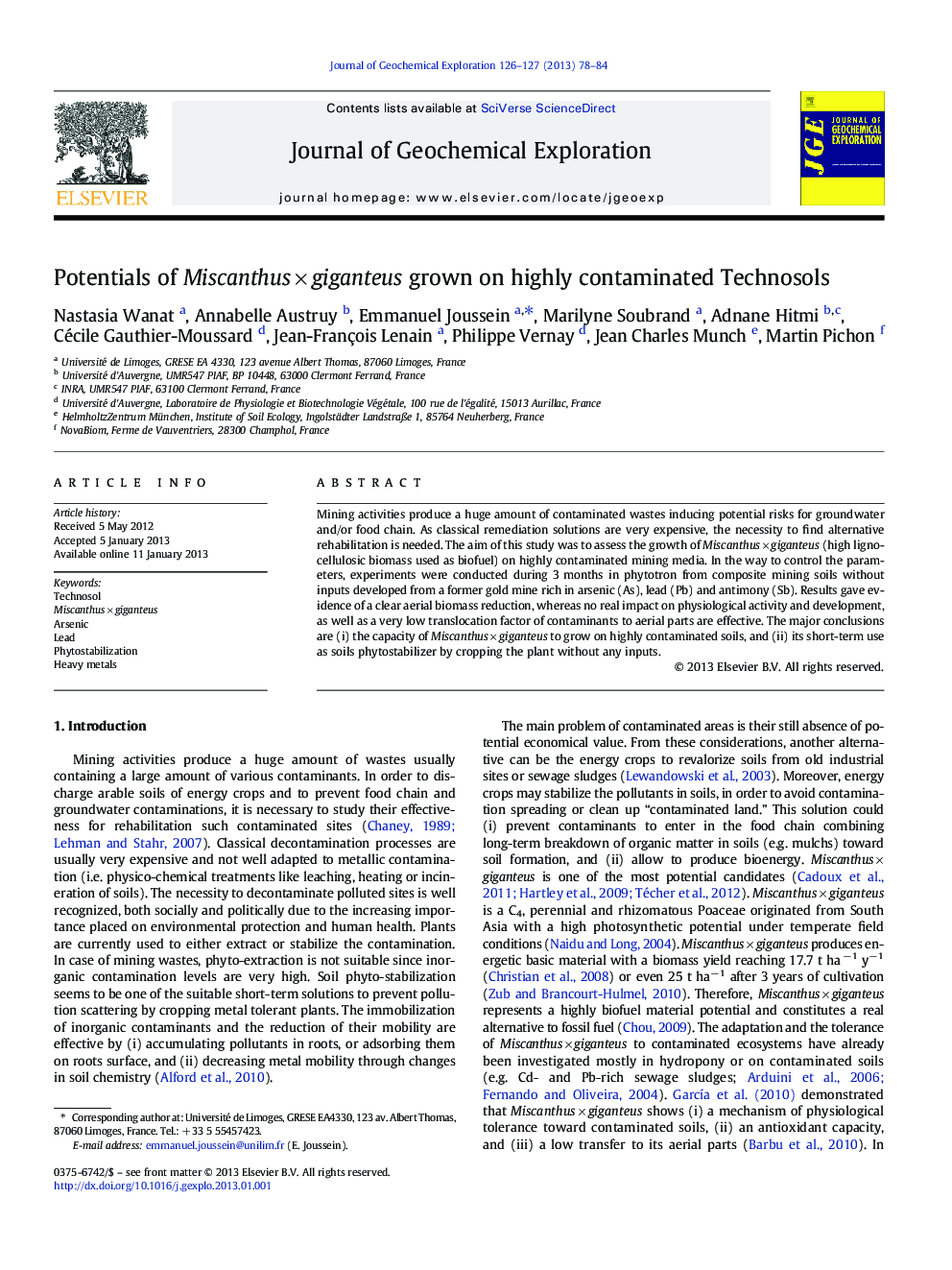| Article ID | Journal | Published Year | Pages | File Type |
|---|---|---|---|---|
| 4457661 | Journal of Geochemical Exploration | 2013 | 7 Pages |
Mining activities produce a huge amount of contaminated wastes inducing potential risks for groundwater and/or food chain. As classical remediation solutions are very expensive, the necessity to find alternative rehabilitation is needed. The aim of this study was to assess the growth of Miscanthus × giganteus (high lignocellulosic biomass used as biofuel) on highly contaminated mining media. In the way to control the parameters, experiments were conducted during 3 months in phytotron from composite mining soils without inputs developed from a former gold mine rich in arsenic (As), lead (Pb) and antimony (Sb). Results gave evidence of a clear aerial biomass reduction, whereas no real impact on physiological activity and development, as well as a very low translocation factor of contaminants to aerial parts are effective. The major conclusions are (i) the capacity of Miscanthus × giganteus to grow on highly contaminated soils, and (ii) its short-term use as soils phytostabilizer by cropping the plant without any inputs.
► Feasibility of Miscanthus × giganteus growth on highly contaminated soils ► Low transfer of metal and metalloid to aerial parts is effective. ► Miscanthus × giganteus is a good candidate for revegetalization or stabilization of mine soils.
